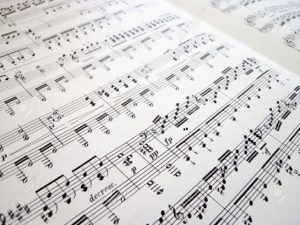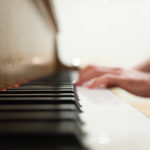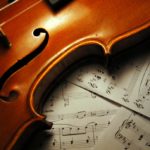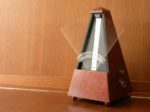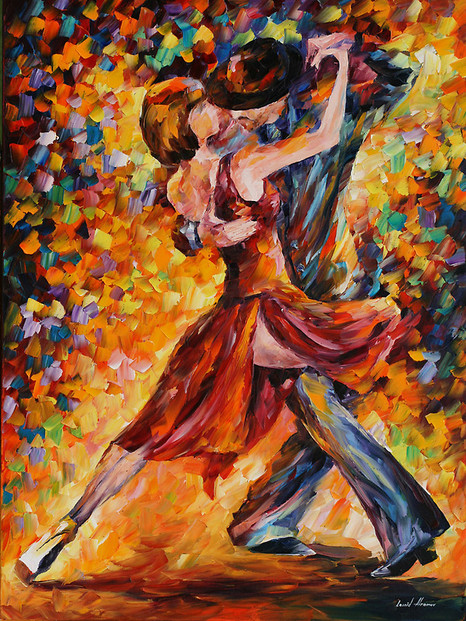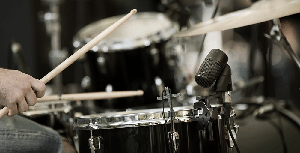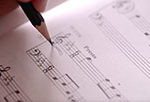
Many parents want to keep track of their child’s learning progress. However, for parents who are non-musicians, listening to teachers or their children talk about music can be confusing and even frustrating at times. In order to better understand your child’s music endeavours, it is inevitable that you, as a parent, have to learn a bit about music as well. To help you with this, we’ve come up with a glossary of common music terms with simplified definitions. Whether you’re a parent, or just someone who’s keen on learning music, this article will guide you through some basic music terminology.
Common Music Terms
- Scale: A set of notes that are played in a sequence of either increasing pitches or decreasing pitches. There are two types of scales—major and minor scales.
- Chord: A group of notes (usually 3) that are played together. They sound nice when played simultaneously.
- Octave: Notes that are the same but have different pitches. Consider a D note. The note that is an octave above it is 7 notes higher—in ascending order, it's E,F,G,A,B,C and then back to D. The second D note is also a D, but is 7 notes higher, and is thus exactly one octave higher.
- Key: The key of a music is the scale on which the music is based. A song in the key of C major is built upon the notes from the C major scale.
- Sharps: A sharp symbol(#) beside a note increases its pitch by a semitone or half-step. In other words, it refers to the next higher note.
- Flats: A flat symbol(b) beside a note decreases its pitch by a semitone or half-step. In other words, it refers to the next lower note.
- Tempo: The speed at which a piece of music should be played.
- Metronome: A device that produces a beat or click at regular intervals. Musicians use these sounds as reference so that they can keep to the tempo of the song.
- BPM: Acronym for Beats Per Minute. A unit used to indicate the tempo of the music.
Music Practice: What does it mean when your child is
- Sight-reading: Reading and performing a piece of music that he or she has not seen before.
- Tuning an instrument: Adjusting the instrument to the desired pitch. The process of tuning a guitar or piano would mean tightening or loosening the strings, which will either increase or decrease the pitch.
Types of Musical Works
- Concerto: Composition featuring a solo instrument accompanied by a group of other instruments, usually an orchestra
- Nocturne: Night music, or music that portrays a night scene. The most famous Nocturnes are written by Chopin. Take a listen to the familiar Nocturne tune that he wrote:
- Etude: A short composition designed as an exercise for musicians to work on a particular technique.
- Suite: Group of musically-related dance movements. Some popular suites include The Nutcracker Suite by Tchaikovsky and the Carmen Suite (opera) by Bizet.
- Sonata-Allegro Form: A type of music from the Classical period that comprises three main sections, usually labelled as A, B and A (both A sections have very similar content, hence the identical label). The most well known Sonata is Mozart’s Sonata in C.
- Sonatina: A short Sonata with either a shortened B section or no B at all.
- Rondo: One main theme repeatedly alternates throughout the piece with other contrasting themes.
- Minuet: Dance music for couples. This form of music originated from France.
Things you see on the score (start of the score)
For this section, I will be using the following score as reference:
(Score A)
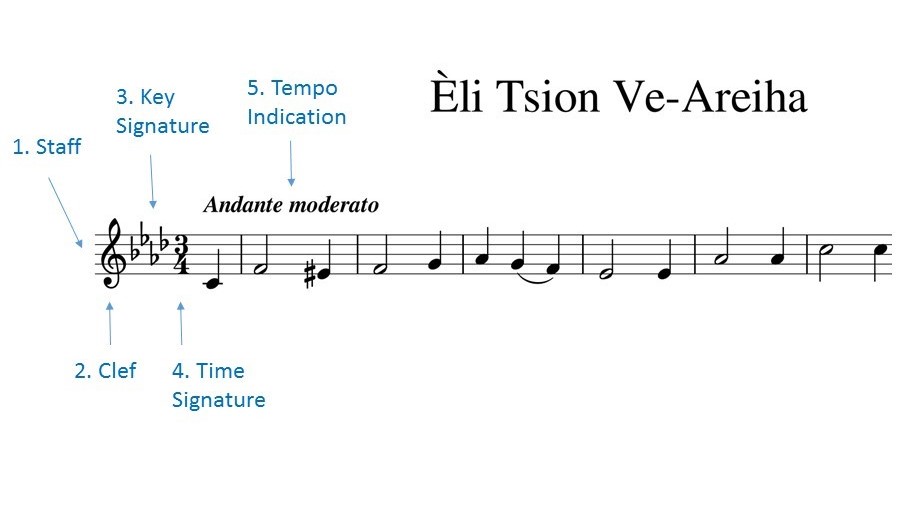
- Staff: The five horizontal lines where musical notes and symbols are written on. Notes are written on the lines and spaces of the staff.
- Clef: Clefs tell us which notes correspond to which lines and spaces. The most common clefs are the Bass clef and the Treble clef. The clef shown in the picture above is a Treble clef.
- Key Signature: Tells you the notes which will be sharpened or flattened throughout the whole piece of music.
- Time Signature: The two numbers tell you how many beats are there in each bar or measure (indicated by the number on top), and the value of each beat(indicated by the number below). With reference to Score A above, this piece of music has three (top number) quarter note beats (denoted by the number 4) in each measure.
- Tempo indications: Italian terms written at the beginning of the piece tells you how fast the music should be played at. Andante Moderato is an indication to play at a comfortable, moderate speed.
Things you see on the score (main body):
For this section, you may refer to the score below as I explain the different musical terms and symbols.
(score B)
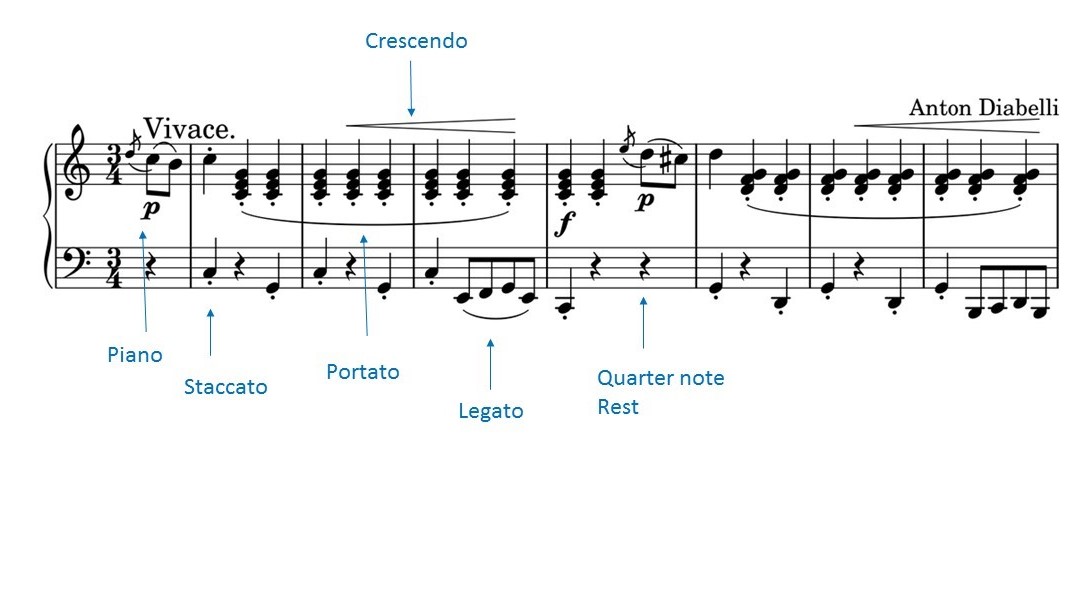
- Note Values: This refers to the relative duration of a note. Note values are termed differently in American and British english. With reference to the image below, a whole note or semibreve is played for four beats. A half note, as its name suggests, is held for half the length of a whole note, which is two beats. Other common note values are shown in the image.
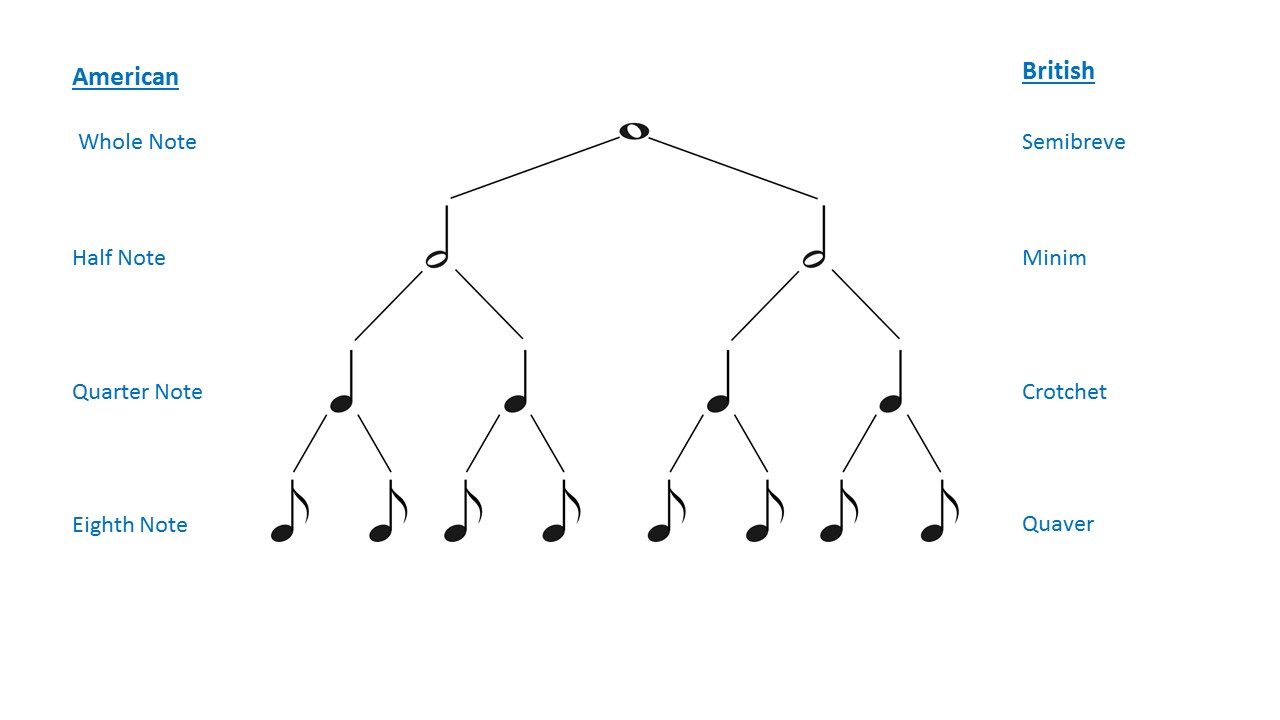
- Rests: Intervals of silence. Just like notes, rests also have values that determine their durations. In Score B (above), you will see many quarter note rests on the bass clef staff(the lower staff). Other common rests symbols are shown in the following image.

- Dynamics: The loudness of the music. On a music score, the f symbol (also known as forte) means that the music should be played loudly, while a p symbol (also known as piano) indicates that it should be played softly. Other common dynamics marking include crescendo or “<” symbol, which means to play with increasing loudness, and the diminuendo or “>” symbol, which means to play with decreasing loudness.
- Articulation: This refers to the effect that a note should be played with. Common articulation marking include the staccato and the legato. Staccato notes are indicated with a dot at the top or bottom, and tells you that they should be played detached from preceding and proceeding notes. Legato notes are indicated with a curve and tells you that they should be connected and played smoothly. Portato notes are indicated with both the staccato and legato symbols. They are to be played with a pulsing articulation.
To find out more about instrument-specific music terminology, check out our articles on:
Ready to learn music theory?
Start learning with our 30-day free trial! Try our music theory courses!
About Liberty Park Music
LPM is an online music school. We teach a variety of instruments and styles, including classical and jazz guitar, piano, drums, and music theory. We offer high-quality music lessons designed by accredited teachers from around the world. Our growing database of over 350 lessons come with many features—self-assessments, live chats, quizzes etc. Learn music with LPM, anytime, anywhere!


